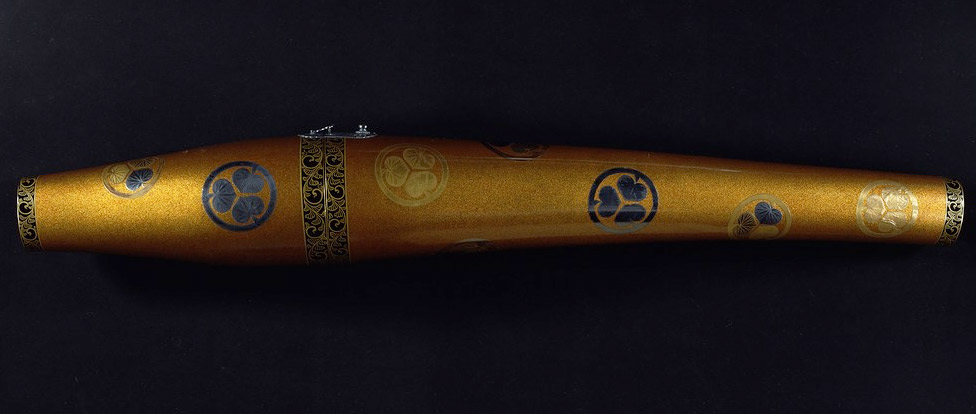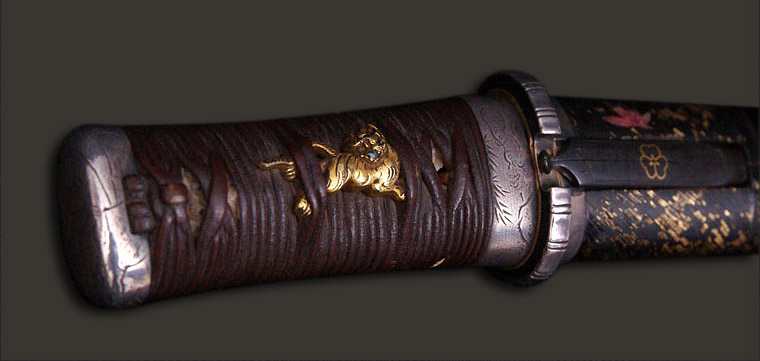- Katana 1€ to 79€
- Katana ONE PIECE
- Katana 80€ to 199€
- Katana 200€ to 599€
- Katana over 600 €
- Katana Custom
- Iaito - 模擬刀
- Wakizashi
- Tanto
- [+] Parts katana
- [+] Katana Accessory
- Engraving katana
- [+] Ninja
- [+] Chinese weapon
- [+] Wooden weapons
- [+] Knife
- [+] Outfits
- [+] House and Objects
- Médiéval Sword
- Military saber
- Home
- Profile
- Services
- Help
- Log in
- **Cart**
- What a difference in a katana and an Iaito
- The different types of steel
- How to choose your katana
- Accessories and maintenance of Iaito and katana
- Little katana dictionary
- What disciplines to practice with a katana or an iaito
- Musashi Miyamoto the greatest samurai Japan has ever known
- The laikidoka sword: the bokken
- Kendo, the legacy of the samurai
- The making of a katana
- The Habaki of the katana
- The Kanjis
- Budo
- The Saya of the katana
- Kyudo
- The Yumi
- The Hamon of the katana
- The Tsuba of the Katana
- How to measure a katana or an iaito
- The Sageo of the katana
- The history of the Japanese sword - 1
- The history of the Japanese sword - 2
- Custom katanas and iaitos
- Chanoyu, the Japanese tea ceremony
- The Iaido
- The boshin war or the last samurai
- The best incense from Japan
- Renovation of Japanese swords
- Ninja
- FAQ
- Terms and conditions
- Site map
- Contact
- Useful links
- Private life
- Clubs & Communities
The history of the Japanese sword - part 2

This uchigatana type saber dating from the Kamakura period has the shape of a tantô dagger that would have been forged on a large scale with a curved blade and a flat hira-zukuri structure. This is a piece of a rare type for the time. Kuniyoshi, a blacksmith from the Awataguchi school in Yamashiro province, was said to have been the son of Norimune and, according to the inscription on this sword, would have been named Sahyôe no Jô of the Fujiwara clan.
The Shinshintō
The end of the Edo era and the beginning of the Meiji era (1781-1876) saw the birth of the Shinshintō, in a period when powers were returned to the emperor by the Shōgun (because his power had diminished in favor of the merchants and other members of the people) and where peace takes place, the katana seems to be forgotten. Fortunately, Suishinshi Masahide, a great actor from the Shinshintō period, will bring the katana back to life. Coming from a family of samurai, he will train a hundred students in Edo. Thanks to him the forge is reborn, the tachi reappears, as well as the five Gokaden (blacksmith schools). The Shinto Tokuden is still practiced. It is a period during which very different katanas from each other are forged, with the idea of rediscovering the different traditions, Kotō understood. The Tanto reappear, whereas they seemed to have disappeared during the Shinto period.
With the Meiji era comes the disappearance of the samurais (Haitorei decree prohibiting the carrying of weapons in 1868). The katana then becomes truly an object of art, and from 1897 some of them are named national treasures.
The showatō and guntō
The showatō will make its appearance during the Showa period during the Second World War: they are the last katanas for truly military use. Many do not respect traditions, and are of poor quality. Rare swords nevertheless stand out such as those of the Yasukuni forge center, the katanas designated Rikugun Jumei Tosho, and those of Gassan Sadakatsu, or Nobufusa. The katanas will also aim to give courage to men during modern wars. The goal was to produce more than 2,150,000 sabers to equip the men of the Japanese army who were to have one. We then speak of guntō, Japanese swords produced in large quantities for military use. In the end, it is estimated that 2,000,000 swords were created during the Kotō, Shintō, and Shinshintō periods, so the challenge was impossible since even 900 years were not enough to produce so many swords. But in order to get as close as possible to this goal, the katanas produced all abandoned traditional steel (Tamahagane) for a much cheaper industrial steel, and simpler techniques of mass production. Designed for modern warfare, they were largely metallic (Saya or iron scabbard, Tsuka or copper handle ...). We will talk about Shin-gunto for the army, Kai-gunto for the navy, as well as Kyu-gunto for the closed handles like the Europeans. When the Japanese surrendered, the United States ordered the destruction of these swords to humiliate the Japanese people. Fortunately, many of these historic katanas were saved. Ultimately, showatō and guntō refer to katanas produced at least not traditionally, and often by chain. Good quality katanas from this period are called gendaitō.
The end of the Edo era and the beginning of the Meiji era (1781-1876) saw the birth of the Shinshintō, in a period when powers were returned to the emperor by the Shōgun (because his power had diminished in favor of the merchants and other members of the people) and where peace takes place, the katana seems to be forgotten. Fortunately, Suishinshi Masahide, a great actor from the Shinshintō period, will bring the katana back to life. Coming from a family of samurai, he will train a hundred students in Edo. Thanks to him the forge is reborn, the tachi reappears, as well as the five Gokaden (blacksmith schools). The Shinto Tokuden is still practiced. It is a period during which very different katanas from each other are forged, with the idea of rediscovering the different traditions, Kotō understood. The Tanto reappear, whereas they seemed to have disappeared during the Shinto period.
With the Meiji era comes the disappearance of the samurais (Haitorei decree prohibiting the carrying of weapons in 1868). The katana then becomes truly an object of art, and from 1897 some of them are named national treasures.
The showatō and guntō
The showatō will make its appearance during the Showa period during the Second World War: they are the last katanas for truly military use. Many do not respect traditions, and are of poor quality. Rare swords nevertheless stand out such as those of the Yasukuni forge center, the katanas designated Rikugun Jumei Tosho, and those of Gassan Sadakatsu, or Nobufusa. The katanas will also aim to give courage to men during modern wars. The goal was to produce more than 2,150,000 sabers to equip the men of the Japanese army who were to have one. We then speak of guntō, Japanese swords produced in large quantities for military use. In the end, it is estimated that 2,000,000 swords were created during the Kotō, Shintō, and Shinshintō periods, so the challenge was impossible since even 900 years were not enough to produce so many swords. But in order to get as close as possible to this goal, the katanas produced all abandoned traditional steel (Tamahagane) for a much cheaper industrial steel, and simpler techniques of mass production. Designed for modern warfare, they were largely metallic (Saya or iron scabbard, Tsuka or copper handle ...). We will talk about Shin-gunto for the army, Kai-gunto for the navy, as well as Kyu-gunto for the closed handles like the Europeans. When the Japanese surrendered, the United States ordered the destruction of these swords to humiliate the Japanese people. Fortunately, many of these historic katanas were saved. Ultimately, showatō and guntō refer to katanas produced at least not traditionally, and often by chain. Good quality katanas from this period are called gendaitō.

Wakizashi from the Edo period
The gendaitō and shinsakutō or shinken
The gendaitō or modern saber, is the name given to katanas forged after the last modification of the Haitorei edict in 1876 (ban on the wearing of the katana), until 1945. Unlike showatō and guntō produced during the same years, gendaitō are considered to be of good quality, because they are forged according to traditions. The wearing of the katana being prohibited, the production decreased dramatically. The demand having almost disappeared, the blacksmiths reconverted. So much so that the emperor, passionate about the katana (but having taken these measures for political reasons) appointed GIGEI-IN, or craftsmen that he begged to return to their original activity and who were paid in this goal. This is how Gassan Sadakazu and Myamoto Kanenori were named GISEI-IN in 1906 by the emperor. Today, katanas forged by accredited Japanese masters are called shinsakutō or shinken. In addition to being works of art, they really kept their cutting abilities like those made at the time.
Descendants of great blacksmiths are still active and pass on their art as well as their predecessors could. We have recent katanas which are of a quality as excellent as many Shintō or Shinshintō, we even think we will one day be able to find the quality of the Kotō of Masamune of Soshu, or of Ichimonji of Bizen. The Japanese sword is therefore not at all about to be lost, and in addition to mass production (which already existed several hundred years ago) the technically superior art katana is still relevant today. , and the techniques are constantly being transmitted and improved.
The gendaitō or modern saber, is the name given to katanas forged after the last modification of the Haitorei edict in 1876 (ban on the wearing of the katana), until 1945. Unlike showatō and guntō produced during the same years, gendaitō are considered to be of good quality, because they are forged according to traditions. The wearing of the katana being prohibited, the production decreased dramatically. The demand having almost disappeared, the blacksmiths reconverted. So much so that the emperor, passionate about the katana (but having taken these measures for political reasons) appointed GIGEI-IN, or craftsmen that he begged to return to their original activity and who were paid in this goal. This is how Gassan Sadakazu and Myamoto Kanenori were named GISEI-IN in 1906 by the emperor. Today, katanas forged by accredited Japanese masters are called shinsakutō or shinken. In addition to being works of art, they really kept their cutting abilities like those made at the time.
Descendants of great blacksmiths are still active and pass on their art as well as their predecessors could. We have recent katanas which are of a quality as excellent as many Shintō or Shinshintō, we even think we will one day be able to find the quality of the Kotō of Masamune of Soshu, or of Ichimonji of Bizen. The Japanese sword is therefore not at all about to be lost, and in addition to mass production (which already existed several hundred years ago) the technically superior art katana is still relevant today. , and the techniques are constantly being transmitted and improved.

Tanto Edo period
The pommel in the shape of a snake with plates of mother-of-pearl and pearls, the tip of the scabbard represents turtles on the ocean.
The pommel in the shape of a snake with plates of mother-of-pearl and pearls, the tip of the scabbard represents turtles on the ocean.

Detail of the sageo saber Edo period

Detail tsuka-ito tanto Edo period
Sources: http://www.katananosekai.net - Benoit
|
No comments
|




